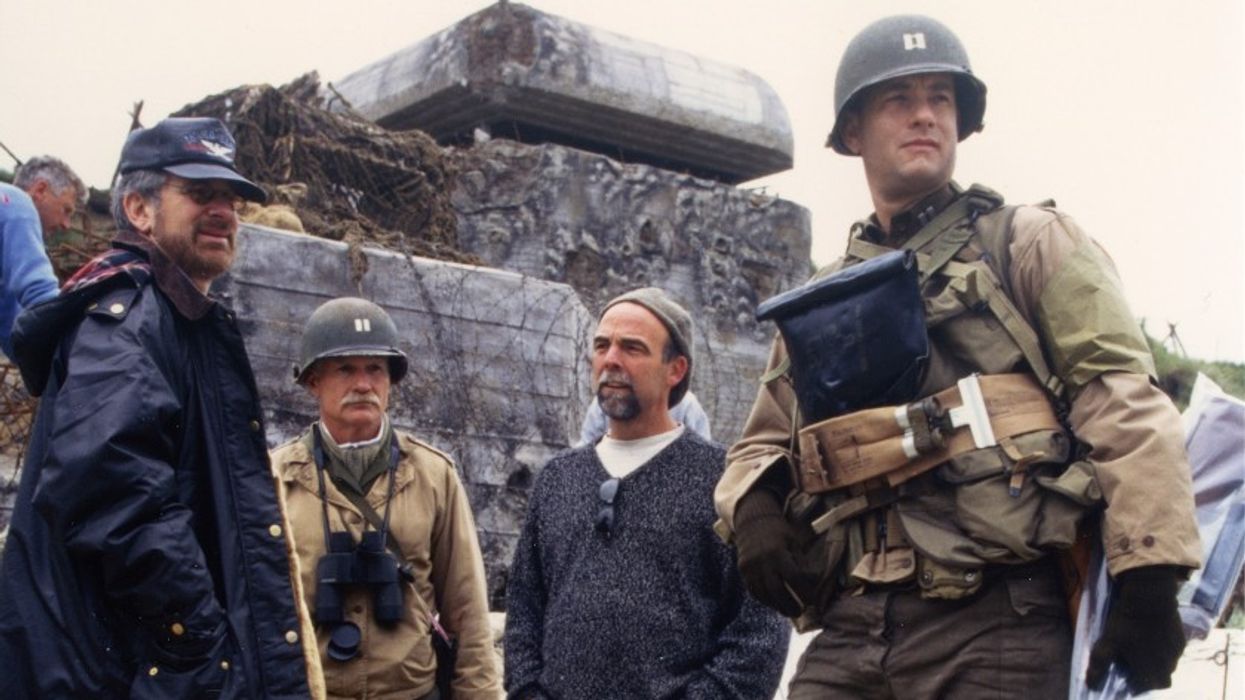Go Behind the Scenes of 'Saving Private Ryan' with Steven Spielberg
Want to make one of the best moves of all time? You have to earn it.

Everyone knows who Steven Spielberg is, so I won't waste the opening lines of this article catching you up to speed on his historic career. Sometimes when I type his name, I get intimidated. It's hard to think of him as just an artist, and not an icon.
That's why I like watching the behind-the-scenes for his films. It shows him as a person working, making decisions, and taking risks. We tend to think of directors as finished products, without ever acknowledging the work it takes to get there.
So today, I wanted to show you this behind-the-scenes featurette on Saving Private Ryan. It follows Spielberg as he takes his childhood wish to make a World War II film that celebrated heroes to the big screen.
Check out the video from FilmIsNow and let's talk after.
Go Behind the Scenes of Saving Private Ryan with Steven Spielberg
First things first, let's call this the movie Spielberg was born to direct.
In a Los Angeles Times article commemorating the film's 20th anniversary, Spielberg recalls, “I picked World War II because, growing up, it was the seminal conversation inside my family. My parents talked about the Holocaust and they talked about World War II. And I was born knowing this. My dad was a veteran—he’s still with us, thank God, 101 years old—he was in the Army Air Corps from 1942 to the beginning of 1945. He had many veterans over to the house, and I became absolutely obsessed with the Second World War, based on my father’s stories, recollections and also based on all the World War II movies that eventually began playing on American television.”
Knowing the calling behind the project, it was fun to see Spielberg's childhood footage juxtaposed against a much bigger production. In the footage, we see him preparing not just to tell a personal story, but the story of so many Americans who volunteered to do their part during the war.
Another thing I loved was seeing them on set.
It's hard to imagine commanding the set with all those extras and effects, but look how Spielberg compartmentalizes each action, shot by shot. He knows what he needs in the camera and checks it off methodically.
There's no difference here except the stakes. I find that inspiring to keep in mind.
Another thing is that no matter what kind of action is going on, we always know the center of each character. One surprising turn was that Spielberg sort of appointed meaning to who would get what from each character, with someone like Upham representing the audience more than any other character, given that, of course, most of us will never experience war.
When it came to Tom Hanks’ Captain Miller, Spielberg says, “Tom was the adult in the story. Tom has played adults and sometimes as an adult he’s played a kid. In this case, he brought something to the movie that I hadn’t seen Tom bring to any other movie before, and that was a stillness. I felt safe around him; I felt safe around his character. So when his hand shakes—and we played that hand shaking a lot—it was meant to discombobulate the audience.”
My biggest takeaway from everything Spielberg does is how much he respects the audience and is always asking how shots and storylines engage us. He's telling us about ourselves with his work. And we're leaning in to listen.
There were so many cool elements in this video. What were some of your favorites? Let me know in the comments.
Source: FilmIsNow











